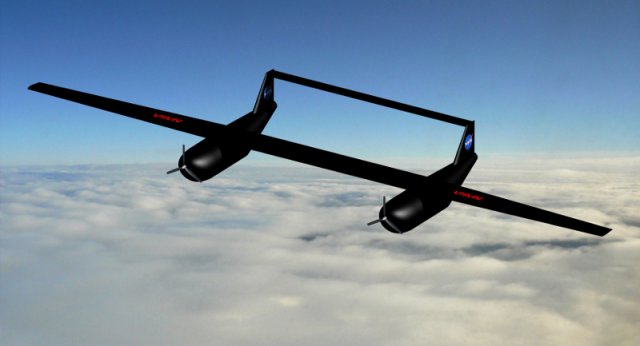A Virginia Tech Department of Aerospace and Ocean Engineering student team won First place in a NASA-sponsored competition with its design of a twin-fuselage unmanned aircraft fueled by liquid hydrogen. The annual University Aeronautics Engineering Design Challenge was sponsored by NASA and not meant to create aircraft that will be built and flown, but to spur design skills among college engineering students.
Those skills indeed paid off as team members have moved onto careers or graduate school. The competition was part of a senior capstone design course sequence to help “students learn by actually designing something to create the best concept that meets customer’s needs” said team adviser Pradeep Raj, professor of aerospace and ocean engineering, part of the Virginia Tech College of Engineering, who taught the two-semester course during the 2013-2014 year.
Students designed a high-altitude, long-endurance aerial system that was cost-effective and best met NASA mandates, added Raj. The craft’s mission: Provide persistent coverage for five months off the West Africa coast where tropical depressions could form into hurricanes. It featured a slick design with twin fuselages, each containing an engine and liquid hydrogen tanks to power the craft for nearly eight days. A combination of two such aircraft could have successfully provided the required coverage, added Raj.
The student team – comprised of nine seniors who all have graduated in May – dubbed their aircraft Gobble Hawk, a humorous homage to a similar NASA aircraft known as the Global Hawk, said Raj. Student team members were Jordan Ambers of Richmond, Virginia; Bennett Coffey of Versailles, Kentucky; Katie Hettmann of Gainesville, Virginia; Kyle Johnson of Burke, Virginia; Brian Petrosky of Crofton, Maryland; Tristan Pietrzak of Virginia Beach; Matt Schmit of Virginia Beach; Cory Reed of Colonial Beach, Virginia; and Sarah Woodward of Huddleston, Virginia.
All of the students were seniors majoring in aerospace engineering at the start of the competition. Schmit served as team leader. Team members discarded seven other concepts before choosing Gobble Hawk, a notion Raj called “learning about design by doing design.” The choice of liquid hydrogen was twofold: It’s a good fuel source with best energy density by weight and its only byproduct is water vapor. In a cost estimate formulated by the team, a fleet of two aircraft would cost roughly $200 million for initial production and 10 years of operation and maintenance.
Team members have used the experience from working on the project in new careers or to plan their return to academia in varying master’s programs. Three team members are now working for Boeing. Petrosky and Reed will pursue master’s degrees in aerospace engineering at Virginia Tech starting this fall.
“Other team projects were helpful, but the scale, time commitment, and pressure that molded the work environment of this project made it a truly beneficial experience,” said Ambers, now a sales engineer with Eaton Corp.’s electrical sector in Dallas. “I am using some of my experiences from this project to help manage my time and the personalities of others in stressful or time sensitive situations.”
“All of our members now either have jobs or are continuing their education in the field of aerospace,” added Coffey. “We also had two members of our team graduate top of the class with 4.0 [grade point averages] and well over half of the team graduated with honors. The unbelievable quality of the team enabled us to challenge each other to go above and beyond our individual capabilities to create a winning design.”

